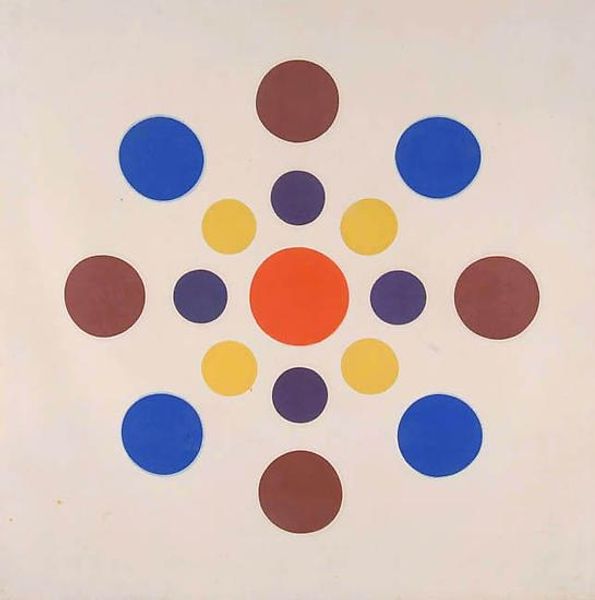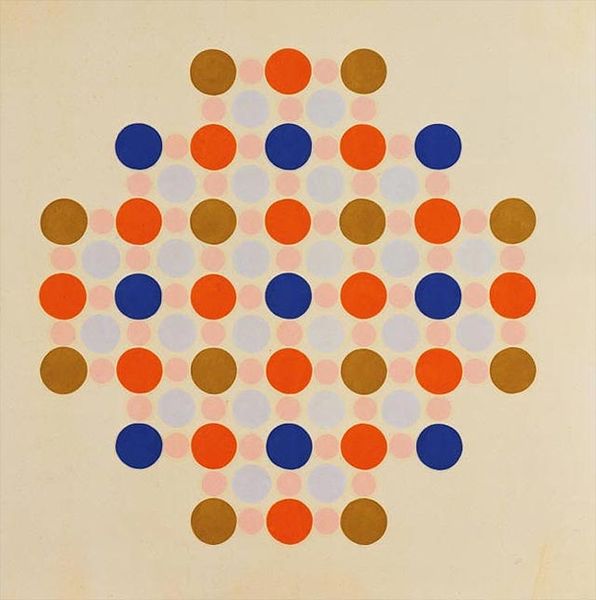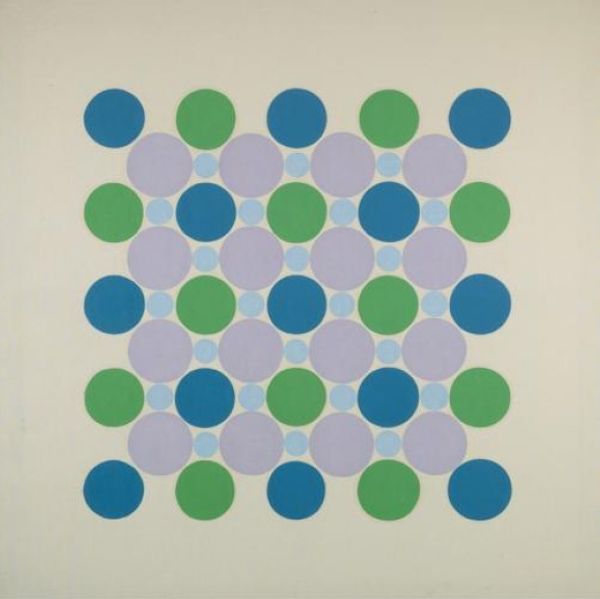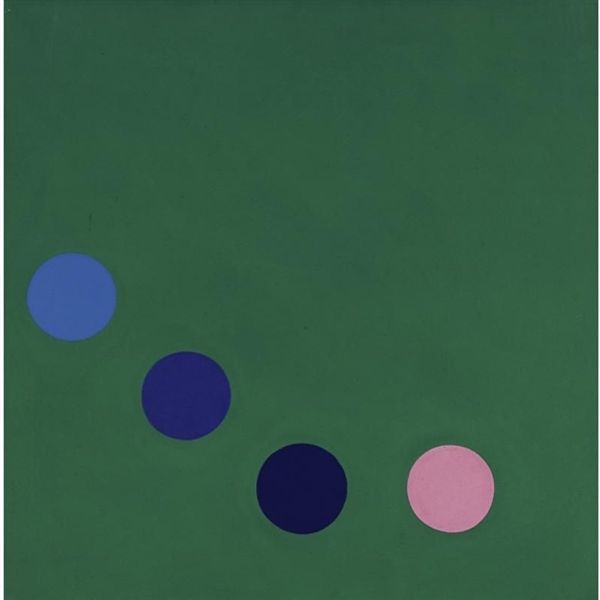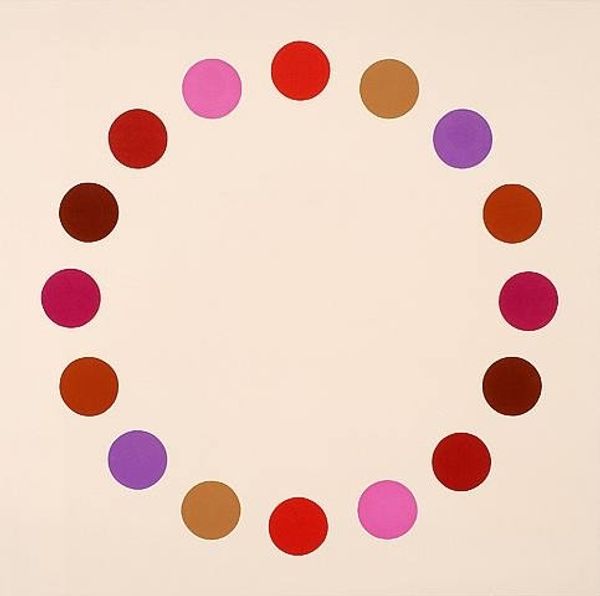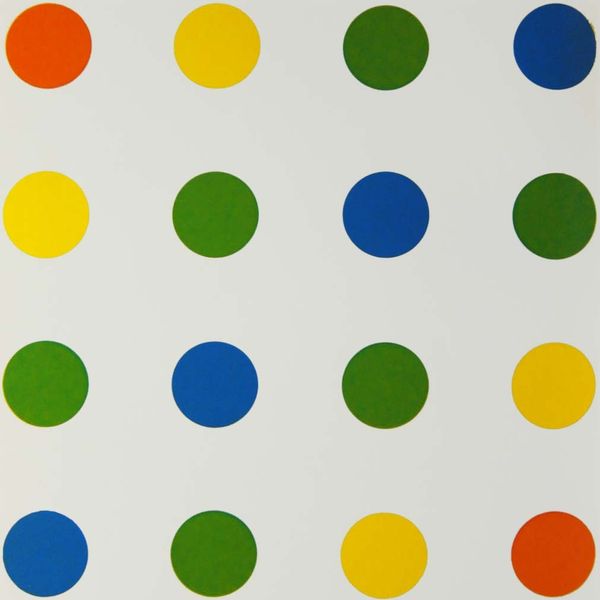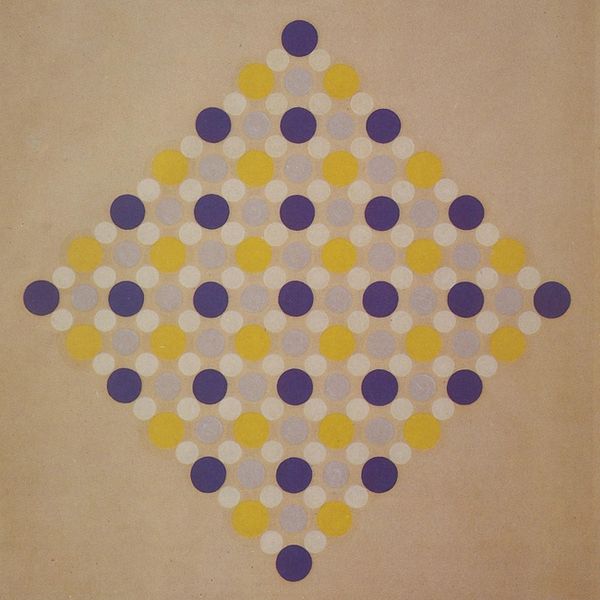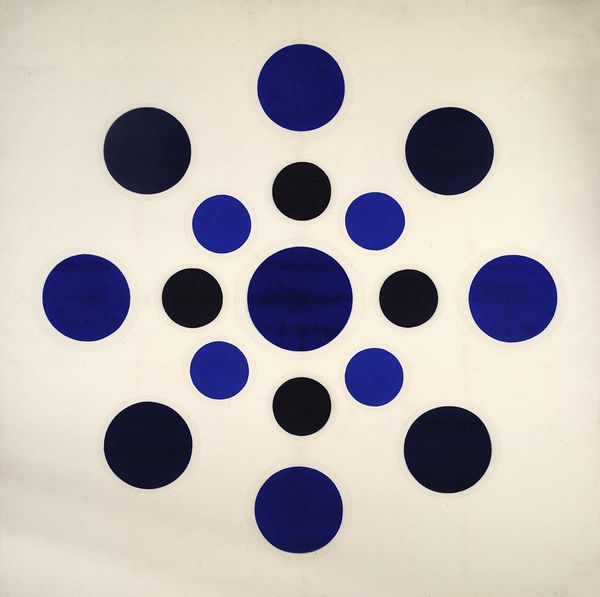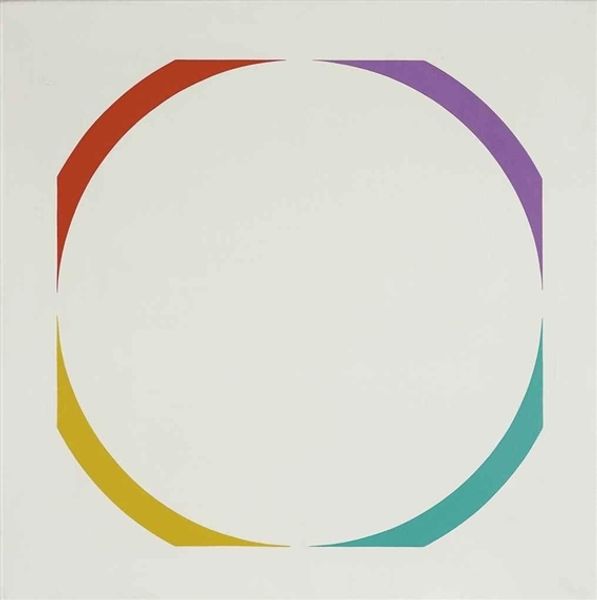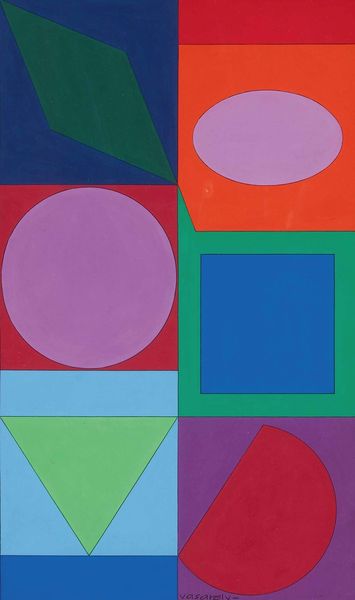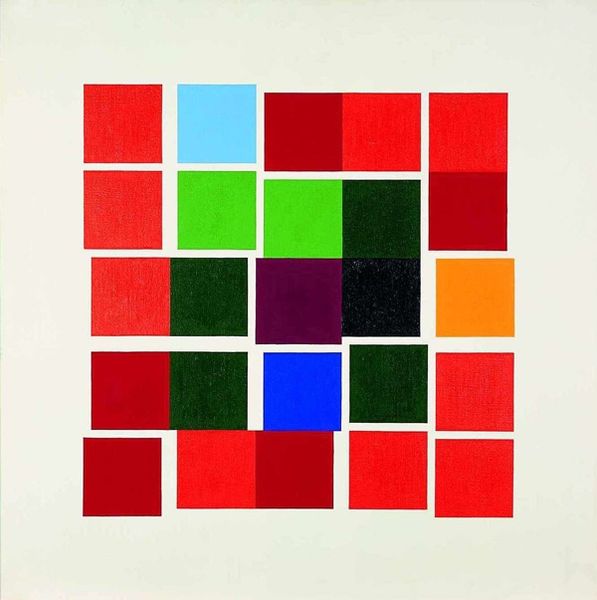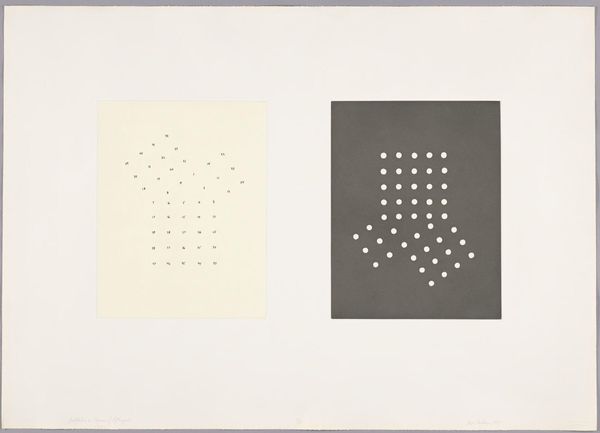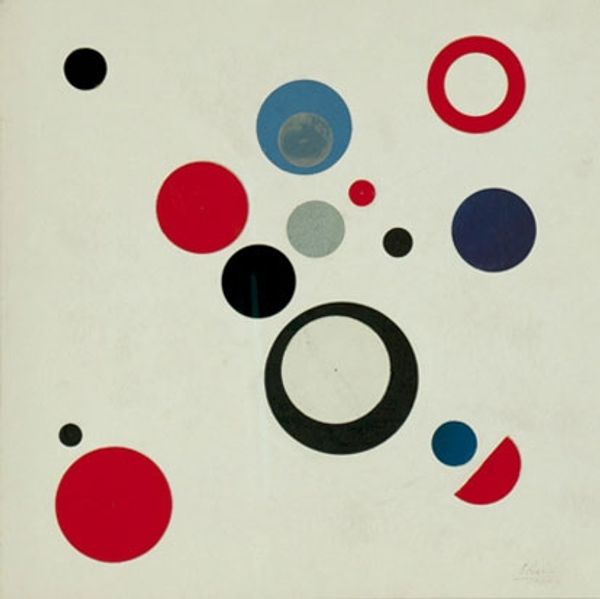
acrylic-paint
#
abstract-expressionism
#
minimalism
#
circle
#
pattern
#
round design
#
colour-field-painting
#
acrylic-paint
#
minimal pattern
#
organic pattern
#
geometric
#
geometric-abstraction
#
pattern repetition
#
modernism
#
hard-edge-painting
Copyright: Thomas Downing,Fair Use
Editor: Here we have Thomas Downing’s "Inning," painted in 1963 using acrylic. I'm struck by the simplicity, almost playful, of the circles against this off-white canvas. It’s clean and balanced but makes me wonder, how do you interpret this work? Curator: Well, considering the socio-political context of the early 1960s, the rise of Minimalism, and the cultural emphasis on objective aesthetics, Downing’s "Inning" becomes more than just colorful circles. These hard-edged paintings were almost a reaction against the angst of Abstract Expressionism, don't you think? There's a rejection of gestural painting in favor of a detached, almost industrial sensibility. How do you see its relation to institutions like museums during that period? Editor: It seems like it would have been perfectly at home in a modern art museum pushing for abstraction. Downing offers pure, unadulterated visual experience, removing much social context from Abstract Expressionism. The focus is entirely on form, color, and spatial relationships. What does the title, “Inning” tell us? Curator: The title hints, possibly, at a sequential order, a cyclical pattern that echoes the cultural obsession with progress. This repetition within a square canvas makes the viewer question how they place themselves relative to mass-produced and commercially distributed objects. Do you consider how Downing’s strategy affects or maybe even alters established institutional expectations and norms about abstract art? Editor: That’s interesting! The uniformity does seem critical of something…I initially perceived it as just a simple design, but you are correct, now I see how "Inning" engages with ideas prevalent in 1960s art culture! Curator: Indeed, considering art in relation to museums, galleries, and social politics gives Downing's circles more weight and provokes consideration. Editor: Thank you, I will never see circles the same way again.
Comments
No comments
Be the first to comment and join the conversation on the ultimate creative platform.
